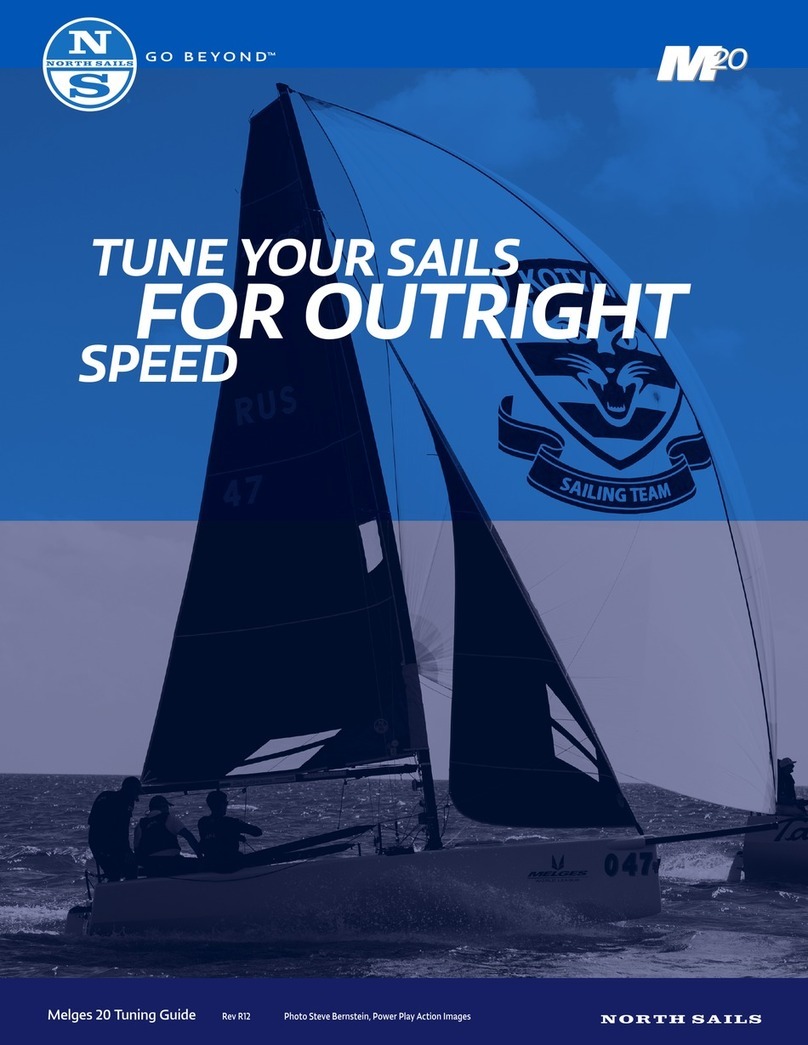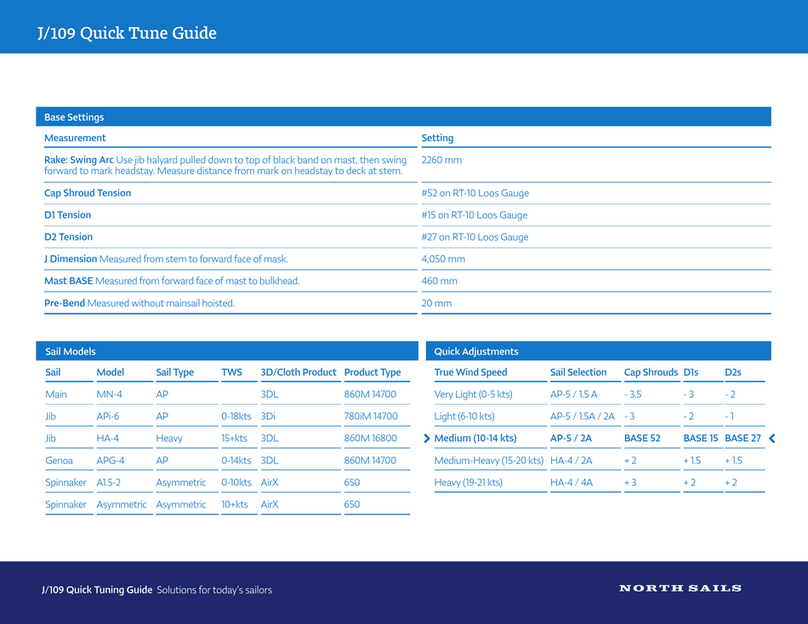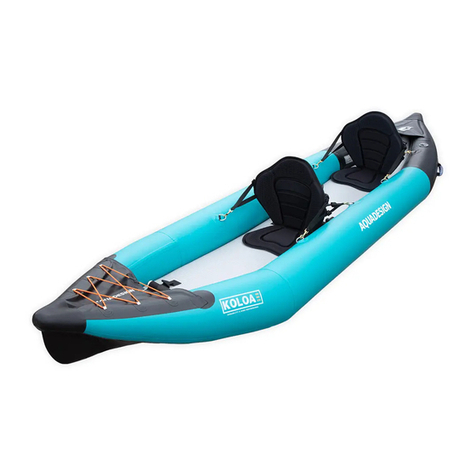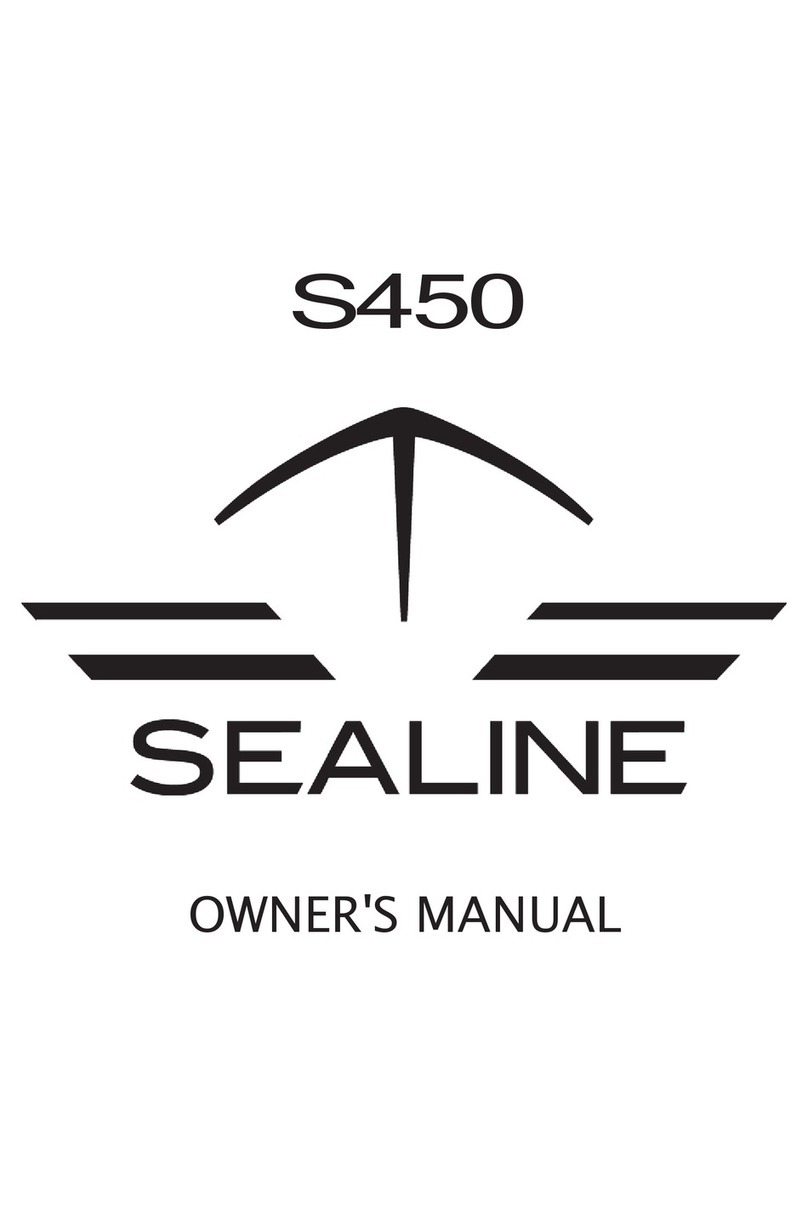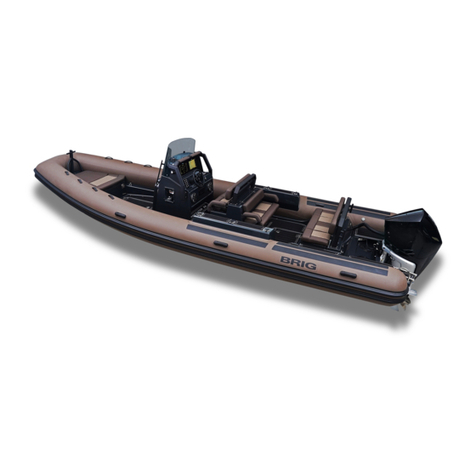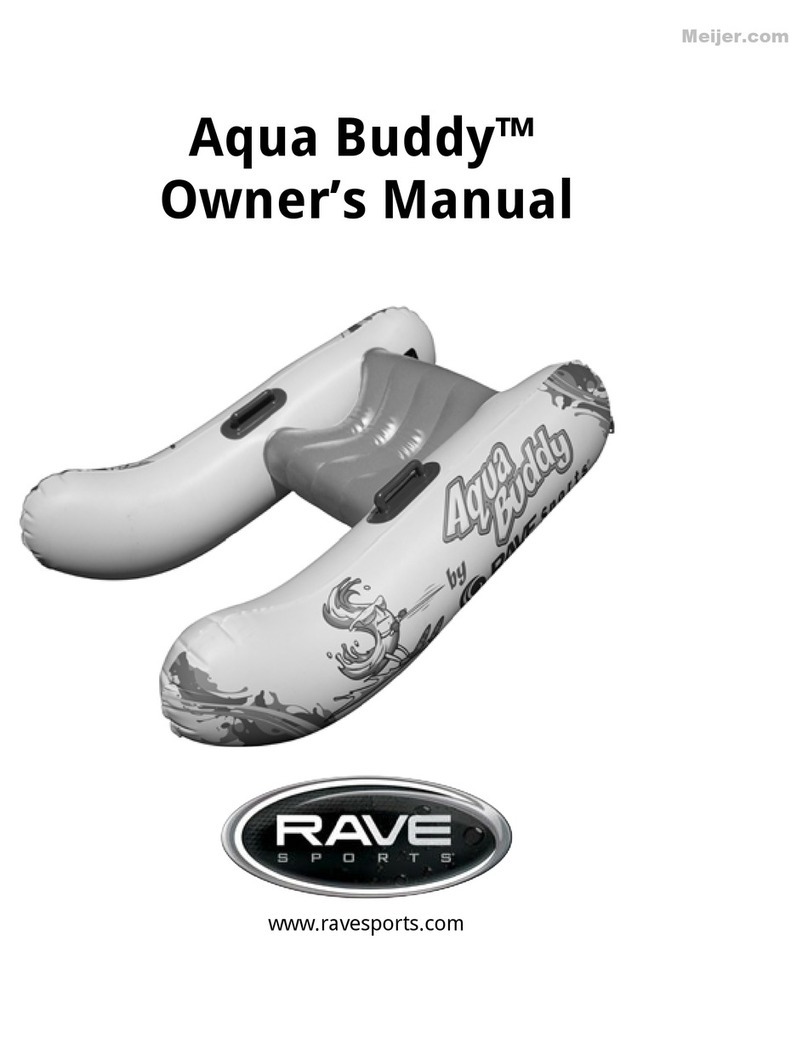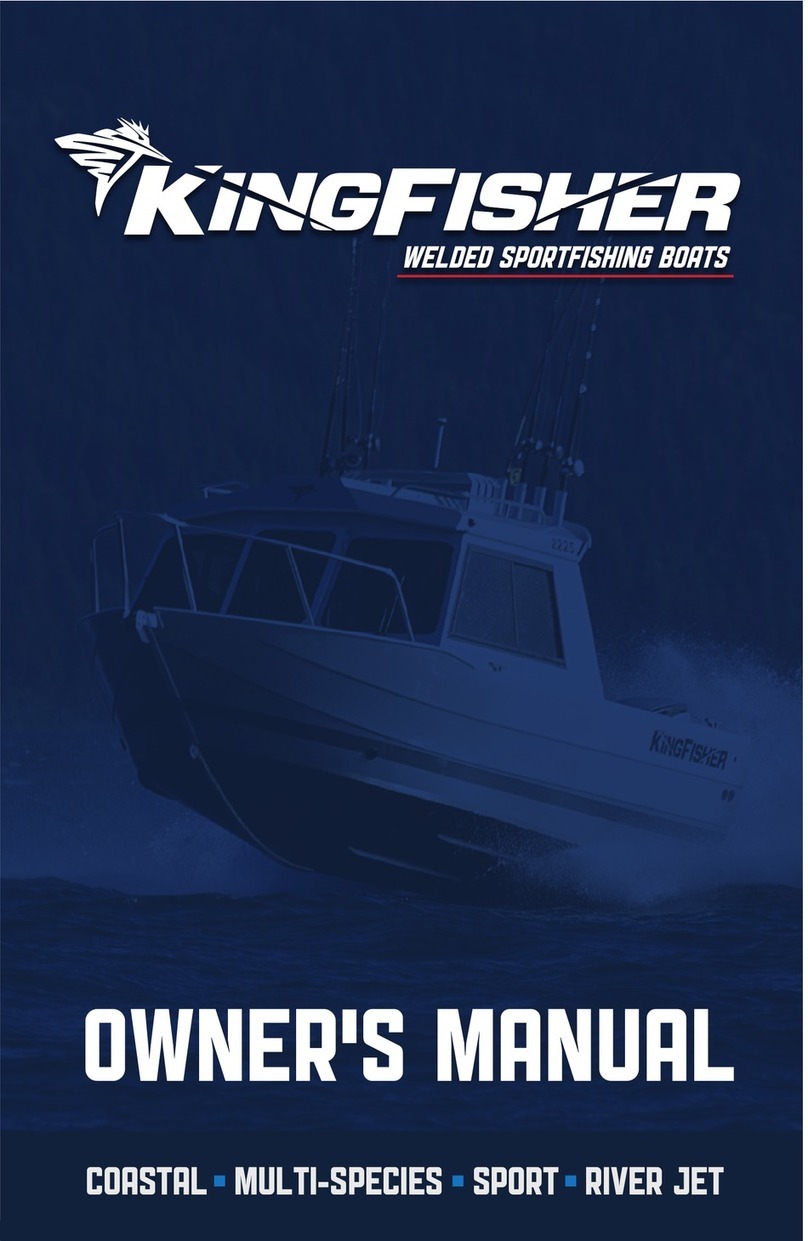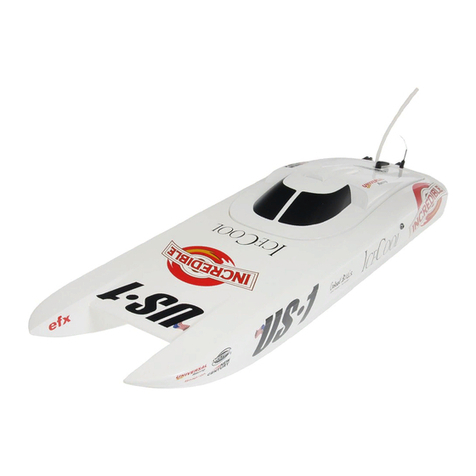NORTH SAILS IC37 User manual

Sailing Manual 1.0


Sailing Manual 1.0
Teamwork will make the dierence in the IC37, and
that’s why North Sails class leader Cameron Appleton
has written the IC37 Sailing Manual. Why 1.0? As the
first boats go sailing, and we all move up the learning
curve, version 2.0 will follow in short order.
By design, the IC 37 class is set up so good amateur
sailors can race on an equal playing field. This manual
aims to help build teams that will be ready to come out
of the starting blocks quickly and develop their own
style and competitive form. This manual will take you
deep into what the team experience can be like and
give you a playbook to having the team prepared when
your boat hits the water.
Sailing is full of variables and complexity, which is what
keeps us coming back for more. Yet simplifying it down
and really concentrating on the basics is what makes
us successful. To race a sailboat well is about doing
what I feel is the easiest part of our sport at the highest
level every time we race—sailing the cleanest, shortest
distance with the fewest mistakes while building on
the team’s strengths. I believe the best teams priori-
tize communications by emphasizing a shared goal of
talking about the performance of the boat, not about
how we need to execute the maneuvers.

Start With Your Crew List
Who will sail with you? That’s all that matters to
start. Use my sample crew sheet for both male and
female owners/helms to set up your team with all the
positions and weights.
This manual outlines how I see setting up a crew,
sailing the boat, and approaching regattas on a daily
basis. The info comes o the backs of many years of
mixed-teams racing in other classes where teamwork,
cohesion and having fun have become second nature.
The maneuvers described are based on my
recommendation that nine crew will be best to sail the
IC37 across a range of breezes. There will be dierent
choices made in the fleet in terms of who and how people
set up their teams, but this is a solid starting point.
So, get your crew list started now, recruit key crew
members, and build from there.
Your Crew Set-Up And Weight
Combinations
The chart below shows roughly how I see most boats
setting up their teams and roles and likely weight
distribution based on the International Melges IC37
Class Association crew weight limit for sanction events:
660 kgs. or 1,455 lbs. Also important are the following
rules (see class rules C.2.2 and C.2.3 for full detail):
Crew composition: The total number of crew permitted
during IMIC37CA-sanctioned events shall comply with
the following:
1. Eight (8) or more total crew, two (2) of which shall
be adult women competitors.
2. Seven (7) or fewer total crew, of which one (1) shall
be an adult woman.
No more than one crew classified as a World Sailing
Group 3 competitor and meeting in full the definition
of a “Boat Captain” may sail aboard an IC37 during an
IC37-sanctioned event. In addition, the “Boat Captain”
regardless of Group Status may sail aboard the
IC37 yacht for which he/she is the designated “Boat
Captain.” A Group 3 “Boat Captain” when competing
may not helm, trim sails or act as tactician.
One youth sailor 16 years old or younger is permitted
on-board without counting towards maximum
weight or maximum crew number during IMIC37CA-
sanctioned events.
The crew weight shall be recorded to one decimal place
of a kilogram.
The Owner may choose to weigh in. If Owners choose
not to weigh in, they shall be allocated a weight of
85kgs. (187lbs.) for a male owner, 75kgs. (165lbs.) for a
female owner. If an owner weighs in, that weight shall
be his registered weight for all events that calendar
year until he/she chooses to weigh in again.
Position Kg Lbs Kg Lbs
1 Helm 85 187 75 167.2
2 Tactician 80 176 80 176
3 Mainsheet 75 165 80 176
4 Trimmer 80 176 75 167.2
5 Trim 2 50 110 50 110
6 Pit 75 165 80 176
7 Mast 90 198 95 209
8Bow 70 154 75 167.2
9 Floater 55 121 50 110
Total 660 1452 660 1458.6
Owner
Weight
M
Helm
F
Helm

Time To Go Racing
Before we look at assignments for specific maneuvers,
let’s review the keys to preparation and approaching
the racecourse. Assign responsibilities for what needs
to happen every time before leaving the dock, and
before and after each race. Also make sure the team
knows your racing goals each day.
When each team member knows their responsibilities
and you know that everything will be taken care, you
and the other team leaders can begin to focus on the
bigger picture—or whatever you think will make the
biggest dierence on a given race day.
Pre Dock-Out Responsibilities:
• Timing to leave the dock should be punctual to the
time you’ve established. This sets you up for a day
of being able to sail against other boats and not
being rushed to get sails up and ready to race.
• Make sure you have all racing documents, weather
forecast, VHF, hand-bearing compass and any
spares you need onboard.
• Check all instruments are switched on and working,
with fresh batteries and spares for the Velocitek.
• Food and water for the day and conditions should
be aboard.
• Sails and equipment are all onboard and ready to go.
Pre Race Responsibilities:
• Sail upwind on both tacks. If possible sail alongside
another boat or boats so you can get your
settings, modes, and also a feel for which tack has
the wind shear and needed twist, and on which it’s
easier to be to windward or leeward.
• Sail o the line and check headings and line feel so
you can build your game plan.
• Run through start-line checks including transits,
line bias, course bias and current.
• Pass out final food and drinks.
Post Race Responsibilities:
• Prep spinnaker to go up again; this means getting
the tack and head zippers properly set along with
making sure the string line is run and everything is
tidy for the next hoist.
• Tidy the boat and make any adjustments you need.
• Pass food and water on deck.
• Debrief the last race and make a plan for next race.
What worked last start/race? For you and/or the
winners?
• Put food away 5 minutes before warning signal.
• Get back into start—line checks, transits, line bias,
current.
Racing Goals:
Have a plan on how you want to approach the start,
where you want to start and for what reasons (line
bias, courses bias). I like to make a plan A and a
plan B, and have a third, back-up option in case the
start doesn’t work out well at all. Talk through your
approach: Will you be aggressive about winning an
end or conservative, starting away from an end with
the ability to sail straight? The more you work on this
and plan, the easier it is to execute the same routine
and get good starts. Remember, it’s all in your set-up,
starting at 3 minutes to go, that will be a huge part of
executing the start you want.
The Pre-Start & Start
Before the start, I recommend that you work on timed
runs and starting drills; this gets the whole team dialed
in and helps you appreciate the conditions. Practice
crossing the line, getting up to speed, and locking in
on the best mode; decide what your o-the-line target
speed needs to be. This can be quickly updated after
the start, based on boats around you. Also during
this time, gain a feel for how the conditions limit
your acceleration or if you are getting to the line too
fast; use this time to find your bottom boat speed
number that you don’t want to go below when killing

speed and time. Drills provide the focus to help you
understand not only the starting area but also the
course that lies ahead.
Starting is a huge priority for me. I break it down into a
bunch of parts:
• 3:00 - Position the boat in area you want to start
or being set up so you can reach your spot.
• 1:30 - Be ready for final approach with time to
adjust to fleet positioning.
• 0:30 (and in rapid sequence until 60 seconds
after the start) - As the time counts down from
30 seconds, you’re looking for your acceleration
spot and style of build, racing to an imaginary 2
boat-length distance behind the line. Once past
this point, your goal is to be trimmed on the wind
and racing, crew fully hiked and sails trimmed
for the mode that you agreed on in your practice
runs. The next minute is very important and the
dialogue about what’s needed or what you need
to do begins.
1. Helm
• Execute smooth steering throughout the start.
• Put the boat on angle, and focus on heel angle and
getting the boat to target speed o the line.
2. Tactician
• Communicate goals clearly—precise calls of where
the boat needs to be and what’s the next move.
• Position the boat for acceleration with focus on
timing, pulling the trigger.
• Give starting targets for executing game plan.
• Talk to trimmers to get the boat going with Helm.
• Handle port runner or take starboard runner and
wind on to load.
3. Main
• Make sure the mainsail is set up, ready for the
start.
• Listen to what’s needed for boat speed.
• Communicate about speed build with Helm and
Trimmer.
• Be ready to adapt and lead the moding if you are
in a compromised position o the line.
• Watch leeward boats’ gauge and performance o
the line; give feedback to Helm and Tactician.
4. Trimmer
• Talk about where jib trim is.
• Communicate about leeward boat’s gauge and
speed. If on layline or above the committee boat
layline, talk with Helm and Tactician whether you
could be shut out.
• Talk about when getting close to bottom boat
speed or are slow, and encourage speed build and
angle.
• Focus on getting the boat to speed and move
weight to windward ASAP once fully trimmed.
5. Trim #2
• Tail jib sheet in maneuvers or grind winch for
trimmer.
• Load and ready new winch.
• Adjust jib halyard and leads if needed.
• Possibly help wind on mainsheet on windward
winch; if not, help the Trimmer.
6. Pit
• Call time and Velocitek distance from the line.
7. Mast
• Control the crew-weight movement.
• Count down time for whole boat.
8. Bow
• Keep boat progressing with the fleet to the line.
• Communicate time-to-kill vs. build time; make
calls on not letting the boat get slow vs. nearby
boats.
• Try to keep boat moving level with fleet or
positioning for best build slot or trajectory to build
in.
• Make good, clear calls on where the bow needs to
be and if you can swing or not (without hitting an
overlapped boat). Skirt jib from time to time.
9. Floater
• Do the starboard runner; talk with main trimmer
about the runner load o the line.
• On final approach, may go to leeward mainsheet
winch for final trim-up once.

Sailing Upwind
It’s important to learn and really know your modes,
and the settings for them for each day’s conditions
or positioning around other boats. Develop good,
clear wording for the mode you want to be in, so the
Trimmers can make it happen. This is led by having
the Tactician or Helm describe what they are trying to
achieve. The Main Trimmer is the lead communication
point and will talk with the Trimmer as to how to set
up the boat for a certain mode. While I feel it’s best to
have the Trimmer call the breeze, sometimes it’s just
too much, so some teams may assign the next person
forward to be responsible for this.
The way I think is best to set up your crew to sail
upwind is to positioning the weight on the rail for
maximum righting moment. From the front 8) Bow,
6) Pit, 5) Trim #2, if Mast is tailing, 7) Mast, if they are
your strongest/biggest crew member, 4) Trimmer, 3)
Main, 1) Helm, then 2) Tactician and 9) Floater in the
back doing the runners. This positioning will change if
you set up your team dierently or have the strength
and weight spread dierently among the positions. I
would want all the weight concentrated around the
middle stanchion with Mast sitting right in front of
it, allowing the Trimmer to be behind the stanchion,
with more room to get in and out without being in the
way of the winch handle for the mainsheet. Once the
wind increases—likely over 12kts—move the heaviest
person aft to hike next to the aft stanchion.
Tacking
1. Helm
• Execute smooth steering through the tack;
dierent conditions will require a dierent rate of
turn and amount of helm to get the boat onto the
new tack.
• Land the boat on correct angle; focus on the boat
speed and heel angle for getting to target.
2. Tactician
• Communicate style of tack.
• Call countdown to tacking the boat.
• Release old runner and load it again—or leave it
o the winch if a dip is expected or on final tack to
windward mark. Alternatively, bring on new runner
if Floater releases old.
3. Main
• Trim main and adjust traveler depending on conditions.
• Communicate about speed build with Helm and
Trimmer.
4. Trimmer
• Release jib sheet and go to leeward and does
build/trim set up; trim on once at speed.
• Or tail jib and do build/trim set up; trim on once at
speed
• Call landing angle for speed build.
• Talk about bottom speed and how well speed is
building.
5. Trim #2
• Tail jib sheet in—unless Trimmer or Mast do this.
• Or release jib sheet and go straight to rail.
• Cross to new side with vang tail in hand if not
involved with the jib.
6. Pit
• Cross to the new side.
7. Mast
• Tail jib sheet in tack unless Trimmer or Trim #2
does this.
• Otherwise, go to new side and hike, taking vang
tail with them
8. Bow
• Cross from side to side.
• Clear halyard if needed, or get it ready for the hoist
on final tack into mark.
9. Floater
• Bring on the new runner or release old runner
(see Tactician).

Sailing Downwind
This is when you’ll have your biggest gains and losses.
Working the boat hard always pays o, and it’s the one
time that the entire crew can contribute to boat speed
and the way the boat is being sailed.
Kinetics are always important, moving as a group and
keeping the boat on it’s toes is important. Keeping low
and out of the line of sight for the Helm and Trimmer
are important. You really want to get in tune with the
way the boat likes to be sailed, so you can move with
the verbiage of the Trimmer to the Helm rather than
there needing to be the extra words spoken. i.e when
the communication is “Come up a few degrees, the
chute is getting light,” crew movement will normally
will be to leeward to heel the boat to help it turn.
Then, when you hear “Good pressure; start working
this down,” that’s your cue to put pressure on the
windward side by moving a number of bodies to
windward; sometimes I’ll call for a “two-body squash”
meaning two crew move to the rail.
Work the boat. You need to find a way to pump the
sails within the Racing Rules of Sailing and the class
rules. This will take good timing and technique, but it
will be fast when done correctly in the right conditions.
Someone will be on the mainsheet aft in the cockpit
and someone winding on the primary winch to help
work the boat down each wave.
Work out a “numbering system” for who will move aft
first, second, and third after the set. If I call for three bodies
aft, then should be no hesitation about who moves.
When will you leave the jib up? It might be from 8 knots
and up. Whatever you decide, you need to know the
number so there’s no hesitation about when you drop
the jib or not. Also consider at what wind strength you’ll
drop the jib halfway to help the spinnaker fill out of a jibe.
One other question is whether to trim the spinnaker
sheet on the windward or leeward winch. You might
need to trim dierently for dierent wind speeds and
grinding power vs. sheet movement. These are going
to be “dealer’s choice” decisions based on the best set-
up for your boat given the style and preference of the
crew. Once this is worked out, then the requirement
and need for grinding the winch will be factored in,
along with who is the best person onboard to slot into
this spot.
1. Helm
• Execute smooth steering and keep boat on mode
that either trimmer or tactician is calling.
2. Tactician
• Communicate about goals and tactical plays,
modes, and what’s next.
• Tactician is No.1 person back for weight downwind.
3. Main
• Trim main and help with communication about
mode and what’s working, along with longer term
wind info.
• There will be certain conditions when Main moves
back, but will not be known in the numbering system.
4. Trimmer
• Sits near primary winch and talks with Helm about
feeling in the Chute and mode to sail or how to
achieve the mode.
5. Trim #2
• Grind on primary winch for Trimmer.
6. Pit
• Work on the kinetics with the Mast, Bow and
Floater in light air.
• Trim jib downwind.
• In the breeze, Pit is probably No. 4 to go back .
7. Mast
• Work on the kinetics with Pit, Bow and Floater in
the light air.
• In breeze, Mast is probably No. 2 to go back.
• Call pressure.

8. Bow
• Make sure spinnaker sheet is clear and ready for jibe.
• Work on the kinetics with Pit, Mast and Floater in
light air.
• In breeze, move aft and trims jib sheet and vang
once the floater goes aft.
9. Floater
• Works on kinetics with the Pit, Mast and Floater in
light air.
• In breeze, Floater is probably No. 3 to go back.
Hoists
There are plenty of little details that all go into making
your sets smooth and give you the chance to gain or
remain strongly positioned in the fleet. One thing is
that we always want to have a good game plan on
arrival into the top mark: What is the setting and exit
goal? Is it a straight set or will there be a jibe? How do
you want to exit—sailing in a high lane, normal VMG,
or low out of the set?
Knowing the game plan will help the whole crew do
their jobs. It could mean a delayed set or early sneak,
and these little subtleties are all important. Depending
on the type of course (oset leg or not) the crew need
to stay on the rail as long as possible, hiking all the way
until the last moment to get into position to set up for
the hoist. These boats respond well to weight on the
rail, and it’s common to think once you reach the top
and turn onto the oset leg you can come o the rail. I
believe in working the boat hard on this leg to get free
of any possible overlap or get that extra half a length
you’d been working so hard for up the beat. This will
give you some freedom to then be better placed with
the boats around you, get to your mode, and try to
extend and remain strong on the boats around you.
Once the jib is eased onto the hobble (a fixed length
sheet for keeping the jib on around the top mark), it
will likely need a trim back in once the bow is down,
to help the spinnaker head and tack out around the
sail and the bow pulpit. The jib sheet also controls the
inflating of the spinnaker—a quick ease to help the
spinnaker fill, then trim the jib back to its downwind
tension, will make your sets really nice and fast.
Don’t get too focused on all your dierent options
leaving the top mark; it’s important to remember the
processes and not to change these much. It becomes
too easy rushing things or hoisting too early, which
in my mind usually ends with a wrap and a bad set.
Timing is important and executing well every time is
rewarding for the crew and your performance.
Two tips:
• On your halyard jammer (clutch), put bright-
colored tape on the underside, so you will quickly
notice if you have left it open!
• *Decide who is the best person in the middle to
trim the jib if Trim #2 is grinding the spinnaker
sheet.
Bear-Away Set
1. Helm
• Execute smooth steering
• Keep the bow at the right angle until the chute is
at full hoist; then put the boat onto best angle to
fill chute.
2. Tactician
• Communicate type of set, style of exit, and plan
out of the mark.
• Ease runner, reducing load to downwind tension.
3. Main
• Ease main to flatten boat, allowing boat to bear
away.
• Adjust for downwind settings—outhaul and
cunningham o, vang to downwind mark and lock
traveler in the middle.
• Trim o the leeward winch in many conditions to
be able to help with weight placement.

4. Trimmer
• Make call on jib up or down
• Ease jib onto hobble and load winch, ready for the
quick snap of spin sheet.
• Move up to windward and start talking with Helm
about feel and speed/angles to sail.
5. Trim #2
• Pull pole/tack out if you can do both. Otherwise
pulls tack out.
• Load lazy spinnaker sheet onto winch and make
sure it’s clear for the jibe.
• Move to grinding on winch if its set o leeward winch.
6. Pit
• Ease vang to mark and release cunningham.
• Pull pole out if Trim #2 can’t do both pole and tack
together.
• Tail spinnaker halyard up from weather side deck
(out of cockpit). Make sure jammer is closed!
• Once going, ease outhaul and set vang up for
downwind.
• Clean halyards and tack line once settled.
7. Mast
• Bounce spinnaker up from mast. Make call: “3, 2, 1,
made!” Checks halyard marks and move to rail.
8. Bow
• Make sure halyard is clear and pulled forward.
• Open hatch and make sure sheets are clean and
set up.
• Dig tack out and pull forward and gets out under
jib foot and around pulpit. Keep hold of the head
the chute.
• Help feed head and tack during hoist, keeping
head forward until hoist call is made.
• Check spinnaker on the way up and makes sure
there are no twists or problems with string line.
• Pulls jib down if that’s called.
• Get lazy spinnaker sheet clear and ready for the jibe.
• Close hatch and get to the rail.
9. Floater
• In light winds, move forward to be ready to help
for jib down if needed.
• In more wind, move forward to help overhaul jib
sheet. Jib needs to come back on to help tack of
spinnaker around pulpit. Then trim until the Pit is
ready.
• When it’s windy, stay back in the boat.
Jibe-Set (Zambuca)
1. Helm
• Execute smooth steering.
• Delay the turn until the bulk of the spinnaker is
around to the new side, then complete the jibe.
• Turn the boat through turn and put bow onto
speed-build angle.
2. Tactician
• Communicate type of set and style of exit; this
maneuver can be called late by design although it’s
pulled o better with more time. It’s important to
follow the important steps—the crew all need to
be on same page.
• Releases old runner or take up new one. Or in light
air, do both runners.
3. Main
• Ease main to allow boat to bear away and flatten out.
• Jibe main across and set up to go downwind.
• Adjust for downwind settings—outhaul and
cunningham o, vang to downwind mark and lock
traveler in the middle.
4. Trimmer
• Make call on jib up or down
• Leave jib sheeted in and cleat; start to pull
spinnaker clew around headstay. In this maneuver,
it’s important that the jib not be over-eased or
pulled back in tight.
• Keep pulling clew around ready to snap the
spinnaker sheet in and get spin flying by over-
sheeting at first.
• Move up to windward and start talking with Helm
about feel and angles.

5. Trim #2
• Pull pole and tack out if you can do both.
Otherwise pull tack out.
• Move to grinding on winch.
• Load new spinnaker sheet onto winch for jibe.
6. Pit
• Ease vang to mark and cunningham o.
• Pull pole out if Trim #2 can’t do both pole and tack
together.
• Make sure spinnaker halyard jammer is closed.
• Tail spinnaker halyard up from cockpit.
• Once going, ease outhaul and sets up vang.
• Clean up halyards and tack line once settled.
7. Mast
• Reaches in and takes slack out of spin halyard.
• Bounce spinnaker up from mast. Make call: “3, 2, 1,
made!” Checks halyard marks and move to rail.
• Pulls jib around and makes sure clew is out so
chute can fill.
8. Bow
• Make sure halyard is clear and pulled forward.
• Open the hatch and make sure sheets are clean
and set up.
• Dig tack and clew out and pull forward and get out
under jib foot and around pulpit. Keep hold of the
head the chute if possible, keeping it forward; need
to have the clew patch pulled (high) and around
headstay so it’s not caught anywhere. Having
this free for the trimmer helps the rotation and
becomes the key to the hoist. Help feed clew, head
and tack during hoist; remember the clew needs to
be moving the whole time!
• Check spinnaker on the way up and make sure
there are no twists or problems with string line.
• Pulls jib down if that’s been called.
• Get lazy spinnaker sheet clear; call “Clear to jibe.”
• Close hatch and get to the rail.
9. Floater
• Move forward to be ready to help taking jib down
if it’s jib-down conditions.
• If windy, stay aft and help tactician jibe runners.
Bear-Away Set, Early Jibe
This maneuver is typically done when you have a nice
lead, and you are thinking about jibing but don’t want
to split with the fleet. You wait and watch the next
boat, and if they are committing to jibe-setting, you roll
into your jibe. Priorities are the same for a normal bear-
away, but you are looking to have the sheet cleared
(call “clear to jibe”) and the new sheet being loaded on
the winch and slack taken out.
If the jib will be coming down, then you have to make
the call over whether to leave the jib up and drop it
at the end of the jibe, or wait until it’s down and, only
then, when Bow calls “clear to jibe,” you can jibe. That’s
always the important part as you don’t want the sheet
under the foot of the jib or tangled in the sail to aect
your jibe. Decide the priority of the jibe and getting the
jib down early, and let the team know the plan.
1. Helm
• Execute smooth steering.
• Keep the bow at the right angle until the chute is
at full hoist; then put the boat onto best angle to
fill chute.
• Work hard on speed out of hoist, ready for the jibe.
2. Tactician
• Communicate type of set, style of exit, and plan
out of the mark.
• Ease runner, reducing load to downwind tension.
3. Main
• Ease main to flatten boat, allowing boat to bear
away.
• Adjust for downwind settings—outhaul and
cunningham o, vang to downwind mark and lock
traveler in the middle.
• Have mainsheet set up, ready for the jibe.
4. Trimmer
• Make call on jib up or down.
• Ease jib onto hobble and loads winch ready for the
quick snap of the spinnaker sheet.

• Move up to windward and start talking with helm
about feel and speed/angles to sail.
• Be ready for the jibe and getting the boat on a
good angle.
5. Trim #2
• Pull pole/tack out if you can do both. Otherwise
pulls tack out.
• Load lazy spinnaker sheet onto winch and make
sure it’s clear for the jibe.
• Move to grinding on winch or get ready to jibe the
chute.
6. Pit
• Eases vang to mark.
• Pull pole out if Trim #2 can’t do both pole and tack
together.
• Tail spinnaker halyard up from weather side deck
(out of cockpit). Make sure jammer is closed!
• Once jibed, ease outhaul and set vang up for
downwind.
• Clean halyards and tack line once settled.
7. Mast
• Bounce spinnaker up from mast. Make call: “3, 2, 1,
made!” Checks halyard marks and move to rail.
8. Bow
• Makes sure halyard is clear and pulled forward.
• Open hatch and make sure sheets are clean and
set up.
• Dig tack out and pull forward and gets out under
jib foot and around pulpit. Keep hold of the head
the chute.
• Help feed head and tack during hoist, keeping
head forward until hoist call is made.
• Check spinnaker on the way up and makes sure
there are no twists or problems with string line.
• Pulls jib down if that’s called.
• Get lazy spinnaker sheet clear and ready for the jibe.
• Close hatch and gets to the rail or get ready to
gybe the jib from on the bow.
9. Floater
• Move forward to be ready to help taking jib down
if it’s jib-down conditions.
• In more wind, move forward to help overhaul jib
sheet. Jib needs to come back on to help tack of
spinnaker around pulpit.
• When it’s windy, stay back in the boat.
Jibing
As on every asymmetric boat, you will find the IC37 has
a style and technique associated with its performance
and the operational side with its winches, etc. Once
you figure out what the turn rate will be to time the
rotation of the spinnaker, you will want to work very
hard to jibe the same way all the time. Use the crew
to work their weight placement and roll the boat
down range with everyone that can move to the old
windward side or even just a step in towards that
side. Also have two or three crew along the rail to
pull (bounce) the new sheet around. The goal of your
steady turn rate is to allow the rotation of the chute to
the new side so the boat hits its speed-build angle just
as the sail pops and you flatten the boat with the crew.
This will be often called by the trimmer, as it will be a
“fast flatten” or a “slow squash” depending on the roll
and turn rate vs. the angle you land on. As the breeze
and waves build, you will find the balance of the turn
rate vs. the spinnaker rotation will need to change. It
will also be aected by how early or late you get the
main across through the jibe. Your style and speed of
rotation and turn will become part of what you develop
to suit your team.
You will have several common styles of jibes:
• “Normal” (VMG) will use the best turn rate for
spinnaker rotation and crew roll.
• “No look” will be used when you want to jibe first,
without the trailing boat jibing also. This as we all
know means the boat gets turned and everybody
plays catch up… Usually people are ready and
holding what they need without showing. I like
to have this where you might have someone that
doesn’t normally do that role but is closest take it

on so the movement and telegraphing is not so
easy for the other boat to see. One thing about
this is the call of “they match” meaning they’re
jibing also—this automatically becomes tricker
because the helm must turn the boat faster,
landing at a higher angle than usual. The crew
know to hit the rail and hike and the spinnaker is
going to be over-sheeted, waiting for the call to
work down a few degrees.
• “Matching jibe” or “Symo” will be used when all
crew are ready to jibe as the boat in front begins
to jibe. Now this isn’t everyone as you still need
the group responsible for speed working hard to
have the boat at 100 percent so you can use that
to jump them. This jibe will be at a faster turn rate
and a higher landing angle…the rest is just like “No
look” and “They match.”
• “Surfing” might mean you have a two-phase jibe,
as usually the wind is up and you are looking for
the right wave. When you find it, you make the
first part of the turn quickly to unload the sails.
You then want to hold the surf while the rotation
happens, then pop the bow up and get ripping
or surfing on the new jibe. Not one jibe in these
conditions is usually the same, and the Helm will
have to adapt to every situation and make the
subtle changes in steering needed to raise the level
of success.
•
1. Helm
• Execute smooth steering.
• Work on turn rate vs. tactical situation or style of jibe.
2. Tactician
• Communicate type of jibe and countdown time
into the jibe.
• Ease runner o or bring on new runner. In light air,
do both.
3. Main
• Jibe main from the winch and then control the
ease so the battens flip through.
• Set up winches if trimming o leeward winch.
4. Trimmer
• Control the ease of the spinnaker sheet to the
headstay and then cut (release) the sheet.
• Turn around and help to bounce the new sheet
around, then load new sheet on the winch.
• Call the angle out of the jibe and work on helping
get to speed and angle again with Helm.
5. Trim #2
• Tail in new sheet, pull hard, and get ready, and with
Trimmer do final bounce—sometimes together,
sometimes leap frogging the other person to keep
the line speed up, then doing a joint bounce and
onto the winch.
• Get winch handle, ready to grind for Trimmer
• Reload lazy sheet, ready for next jibe.
6. Pit
• Jibe the jib, pulling it in tight before the spinnaker is
rotated around the headstay. Then ease sheet and
trim jib in on new tack. Don’t pull it too soon as it
will need to remain loose until the spinnaker sheet
is eased and the boat is up to speed.
7. Mast
• Either bounce the chute around, standing on the
deck, or pull from within the cockpit.
8. Bow
• Check everything on the bow is clear.
• Bounces spin sheet on deck with Mast.
9. Floater
• Jibe runners with Tactician if in aft spot
• If forward, take care of the van.
Drops
Planning your entry into the bottom mark takes
place on the last third of the run as you figure out
which mark you want and how you plan to get there.
Remember, there is a big risk reward as it’s not only
about the approach and set-up for the mark but also
leaving it and making a good exit.

I feel it’s important to prioritize positioning the boat
where you allow the crew to be able to execute their
jobs. Getting the chute down, having a good turn into
and exit from the mark with everyone on the rail is more
important than pushing the drop to the last moment
and then having a problem. (OK, yes, there are times
when getting that overlap outweighs the last sentence.)
Communicate about which mark you’re going to, when
you want to drop, how you want to leave the mark,
and which boats are problems or goals to be inside.
You have two gate marks on most windward-leeward
courses, so it’s going to be very simple, with three
drop types that have slightly dierent time variations
based on conditions or overlaps situations. I break it
down this way as my philosophy is that broken down
and made as basic as possible only increases your
execution rate.
1. Windward Drops are usually the safest and
fastest.
2. Leeward Drops can be a little harder to get
onboard as the lifelines come into play and you
have to pull the spinnaker back forward over and
around everything to get it into the hatch.
3. Mexican/Kiwi Drops are not as common as the
speed of drops happens so fast these days, but
calling for one lets the crew know you will be jibing
to go around the mark. And sometimes your call
for a leeward drop will be delayed and turn into a
Mexican/Kiwi. Remember the string line is on the
port side of the boat and on the port side of the
spinnaker to help the windward drop out.
Approaching the left turn (port mark), you have the
following options:
1. Port-tack approach - this has you as give-way
boat for any crosses and usually as outside boat;
be ready to change your timing on the drop =
Windward drop
2. Starboard approach - this usually has you on the
inside and with all the rights = Leeward-drop-
turning-into-a-Mexican/Kiwi or if it’s lighter
and you’re not pressed on the layline, a straight
Mexican/Kiwi—likely because you’re looking for
the drop to happen in the turn as you gain VMG
into the mark.
Approaching the right turn (starboard mark), you
have the following options:
1. Port Approach - usually here you are on the inside
and with rights to room to round the mark =
Windward drop with a jibe at the end. Many teams
will create a code word, so the planned maneuver
with a jibe is clear.
2. Starboard Approach - in this case, you’re often an
outside boat with right of way only until you meet
an inside boat in the zone, so be ready to change
your drop timing = Leeward drop.
Leeward Drop
As it gets windier this drop can become risky, and a
dial-down of the bow for the drop becomes important
to help stand the boat up and limit the load and bow
waves from grabbing the tack. Remember the tack
becomes your life to get this safe. It’s always good to
have a really long tack line so if you have a trawl you
can blow it all the way to release the water out. The
countdown “5, 4, 3, 2, 1, drop!” becomes vital for the
Helm, Trimmer and Pit. The Mast will be taking up
tension on the takedown string line while standing
facing forward, braced behind the companion way
hatch (the string line will exit from a turning block
at the base of the mast). On the “3,” the bow comes
down, on “2,” the sheet is eased, then a combination of
halyard (first) and tack (second) at the drop call. With
the countdown at 1, start to open the jammer (clutch),
ready for the drop call.

1. Helm
• Look around to know where mark is and which
boats will have rights or give room.
• Bring bow down the required amount for the
conditions.
• Look for the mark again and work out which boats
to steer around.
• Execute a nice wide-and-tight turn, trying not to
park the boat up but let it accelerate into and out
of the turn.
2. Tactician
• Communicate type of drop exit and the plan out of
the mark.
• Count down the drop.
• If not going to left (port) turn, wind runner up
before mark to be about 80-90 percent tension.
• If jibing, ease runner o or bring on new runner. In
light air, do both runners.
3. Main
• Set up main for the beat.
• Have both mainsheet winches ready to be ground in.
4. Trimmer
• Ease spinnaker sheet at the count of 2, then stand
by to overhaul sheets out of the water.
• Load jib onto winch and prepare to trim on or jibe
the jib.
• Move up to windward side and load new sheet.
• Start talking with helm about feel and speed/
angles to sail.
5. Trim #2
• Pull pole in on Bow’s call.
• Get tail of jib sheet to tail in for Trimmer while
hitting the rail
6. Pit
• Set up outhaul and cunningham.
• Make sure jib halyard is at its mark for the beat.
• Blow the halyard (first) and tack jammer (second)
on the drop call.
• Follow the drop and be ready to check the halyard
on the way down.
• If needed, go forward and lift clew over the life lines.
• Once clean and clear, hit the rail with vang in hand.
7. Mast
• Stand in cockpit with feet on back of
companionway, ready to pull chute down with
string line. Pull out all slack as countdown
happens. Once chute is all the way in, throw string
line forward to front of cockpit and hit the rail.
8. Bow
• Be on your feet and able to move around the
hatch.
• Make sure string line is clear to go.
• Open hatch and make sure lazy sheet is over hatch
and set up for the drop.
• Be ready to start pulling on string line until cloth of
sail is reached, then work tack inside and under the
jib, then work the clew and head while going up
the sail stung all parts down as it’s pulled in.
• Clean up and close hatch; check to see if jib needs
skirting.
• Hit the rail and start hiking. You need to wait until
first tack to clear halyard and move it to the clip
(which is at base of mast or chainplates).
9. Floater
• When windy, stay back and help set up the
runners.
• If jibing to mark, release old runner or bring on
new runner.
• Hit the rail and start hiking.
Windward Drop
As it gets windier this drop becomes your safer drop, but
a dial-down of the bow is still important to help stand
the boat up and limit the load. The countdown “5, 4, 3,
2, 1, drop!” becomes vital for the Helm, Trimmer and Pit.
The Mast will be taking up tension on the takedown
string line to beat the whole drop process. On the “3,”
the bow comes down, on “2,” the sheet is eased, then a
combination of tack (first) and halyard (second) at the
drop call. With the countdown at 1, start to open the
jammer (clutch), ready for the drop call.

1. Helm
• Look around to know where mark is and which
boats will have rights or give room.
• Bring bow down the required amount for the
conditions.
• Look for the mark again and work out which boats
to steer around.
• Execute a nice wide-and-tight turn, trying not to
park the boat up but let it accelerate into and out
of the turn.
2. Tactician
• Communicate type of drop exit and the plan out of
the mark.
• Count down the drop.
• If not going to left (port) turn, wind runner up
before mark to be about 80-90 percent tension.
• If jibing, ease runner o or bring on new runner. In
light air, do both runners.
3. Main
• Set up main for the beat.
• Have both mainsheet winches ready to be ground in.
4. Trimmer
• Ease spinnaker sheet at the count of 2, then stand
by to overhaul sheets out of the water.
• Load jib onto winch and prepare to trim on or jibe
the jib.
• Move up to windward side and load new sheet.
• Start talking with helm about feel and speed/
angles to sail.
5. Trim #2
• Pull pole in on Bow’s call.
• Get tail of jib sheet to tail in for Trimmer while
hitting the rail.
6. Pit
• Set up outhaul and cunningham.
• Make sure jib halyard is at its mark for the beat.
• Blow the tack jammer (first) and halyard jammer
(second) on the drop call.
• Follow the drop and be ready to check the halyard
on the way down.
• Once clean and clear, hit the rail with vang in hand.
7. Mast
• Stand in cockpit with feet on back of
companionway, ready to pull chute down with
string line. Pull out all slack during countdown.
Once chute is all the way in, throw string line
forward to front of cockpit and hit the rail.
8. Bow
• Be on your feet and able to move around the
hatch.
• Make sure string line is above headstay and pulling
high.
• Open hatch and make sure lazy sheet is over hatch
and set up for the drop.
• Be ready to start pulling on string line until cloth of
sail is reached, then work tack inside and under the
jib, then work the clew and head while going up
the sail stung all parts down as it’s pulled in.
• Clean up and close hatch; check to see if jib needs
skirting.
• Windward drop allows Bow to bring halyard aft
with them and clip it to keeper as they hit the rail
and start hiking.
9. Floater
• When windy, stay back and help set up the
runners.
• If jibing to mark, release old runner or bring on
new runner.
• Hit the rail and start hiking.
Mexican / Kiwi Drop
As it gets windier, this drop becomes an early-leeward-
drop-turning-into-a-Mexican. The dial-down of the
bow remains important to help stand the boat up and
limit the load and bow waves. The countdown “5, 4, 3,
2, 1, drop!” is vital for the Helm, Trimmer and Pit. The
Mast will be taking up tension on the takedown string
line to beat the whole drop process. On the “3,” the
bow comes down, on “2,” the sheet is eased, then a
combination of halyard (first) and tack (second) at the
drop call. With the countdown at 1, start to open the
jammer (clutch) ready for the drop call.

1. Helm
• Look around to know where mark is and which
boats will have rights or give room.
• Bring bow down the required amount for the
conditions.
• Look for the mark again and work out which boats
to steer around.
• Execute a nice wide-and-tight turn, trying not to
park the boat up but let it accelerate into and out
of the turn.
2. Tactician
• Communicate type of drop exit and the plan out of
the mark.
• Count down the drop and then the turn for the jibe.
• Ease runner o or bring on new runner. In light air,
do both runners.
• Bring runner up to tension.
3. Main
• Sets up main for the beat
• Jibe the main.
• Have both mainsheet winches ready to be ground in.
4. Trimmer
• Ease spinnaker sheet at the count of 2, then stand
by to overhaul sheets out of the water.
• Load jib onto winch and prepare to jibe the jib and
trim on around the mark.
• Move up to windward side and load new sheet.
• Start talking with helm about feel and speed/
angles to sail.
5. Trim #2
• Pull pole in on Bow’s call.
• Get tail of jib sheet to tail in for Trimmer while
hitting the rail.
6. Pit
• Set up outhaul and cunningham.
• Make sure jib halyard is at its mark for the beat.
• Blows the halyard (first) and tack (second) jammer
on the drop call.
• Follow the drop and be ready to check the halyard
on the way down.
• If needed, go forward and lift clew over the life
lines and around the shrouds.
• Once clean and clear, hit the rail with vang in hand.
7. Mast
• Stand in cockpit, with feet on back of
companionway, ready to pull chute down with
string line. Pull out all slack during countdown.
Once chute is all the way in, throw string line
forward to front of cockpit and hits the rail.
8. Bow
• Be on your feet and able to move around the
hatch.
• Make sure string line is ready to go.
• Open hatch and make sure lazy sheet is over hatch
and set up for the drop.
• Be ready to start pulling on string line until cloth of
sail is reached, then work tack inside and under the
jib, then work the clew and head while going up
the sail stung all parts down as it’s pulled in.
• Clean up and close hatch; check to see if jib needs
skirting.
• Hits the rail and starts hiking. With leeward drop
and this one you need to wait until first tack to
clear halyard and move it to the clip.
9. Floater
• When windy, stay back and help set up the
runners.
• Release old runner or bring on new runner.
• Hit the rail and start hiking.
Cameron Appleton, North Sails
Consultant and former America’s Cup
sailor, has in recent years won the Melges
32 Worlds (2 times), Farr 40 Worlds
(3 times), and RC44 Tour champion (5
times). He races with success on all sizes
of boats, from J/70s to superyachts.

12+ Knot Configuration
Light Air Configuration

Drifting Configuration

northsails.com
Table of contents
Other NORTH SAILS Boat manuals
Popular Boat manuals by other brands

MasterCraft
MasterCraft 2014 X14v owner's manual
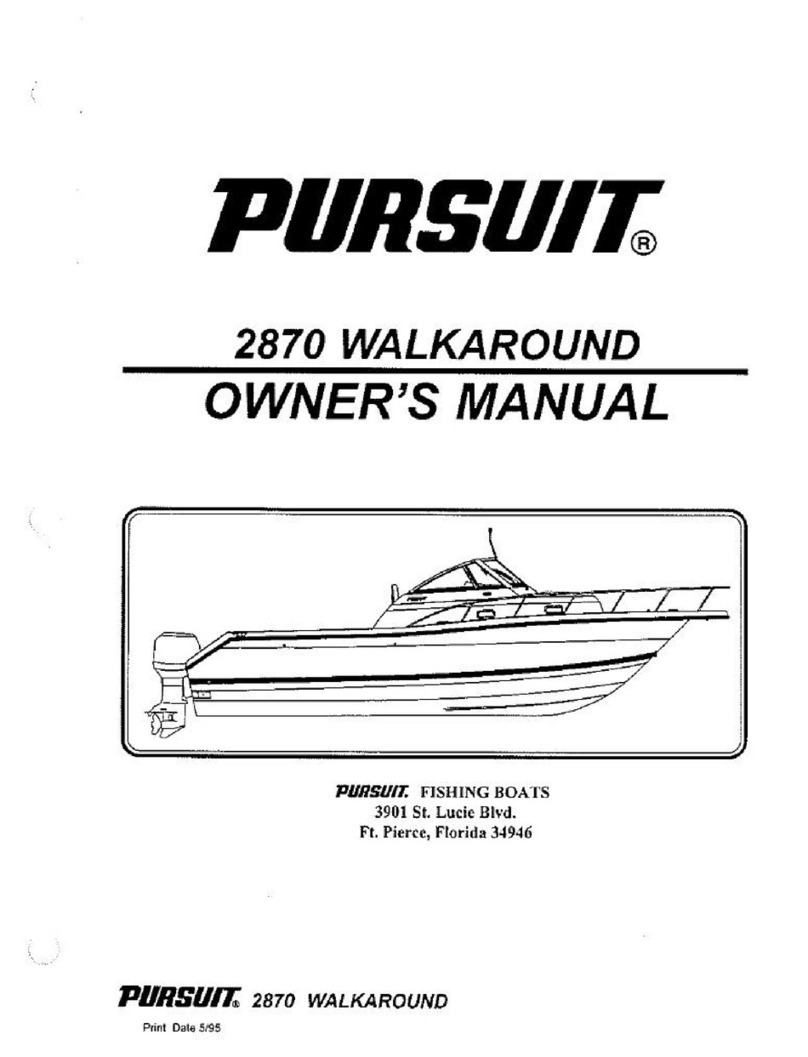
PURSUIT
PURSUIT 2870 Walkaround owner's manual

SAFEQUIP
SAFEQUIP ResQcraf 380 Operation & maintenance manual
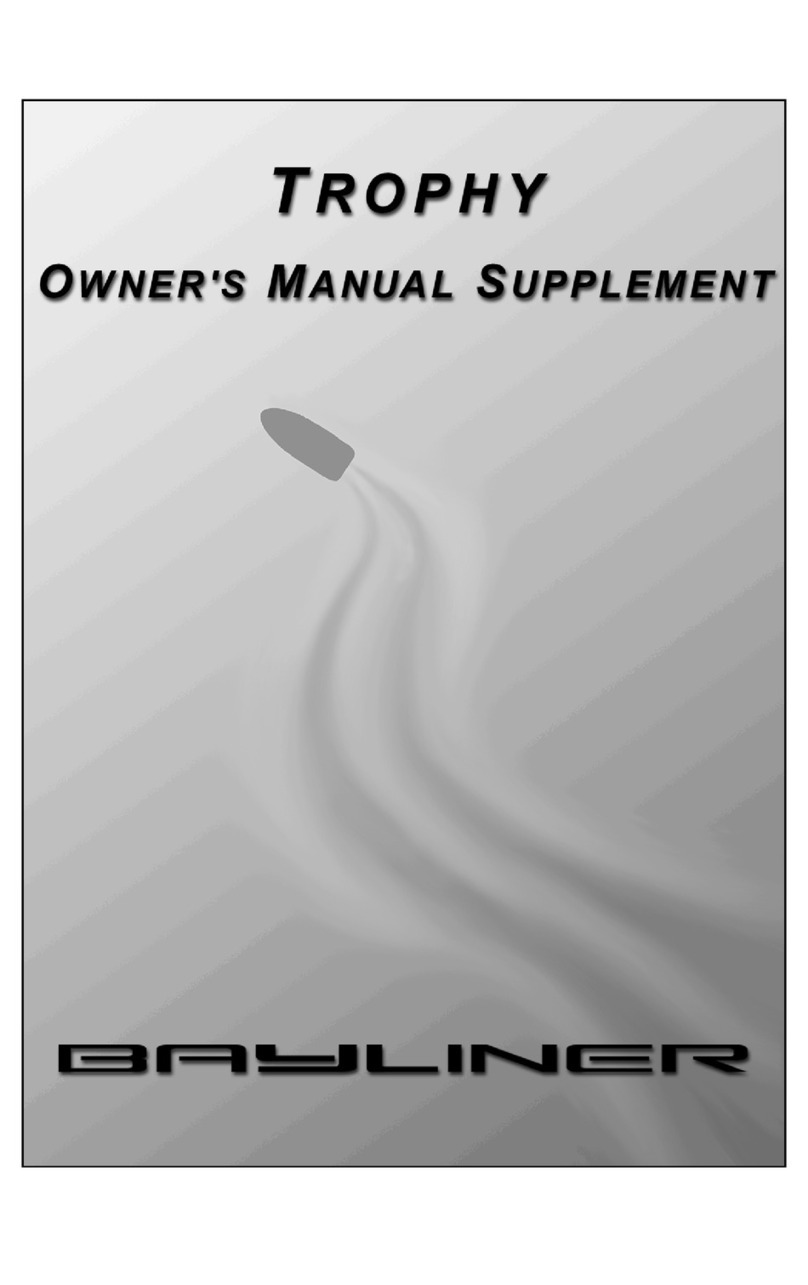
Bayliner
Bayliner Trophy 1703FS Owner's manual supplement

Pro-Line Boats
Pro-Line Boats 20 EXPRESS 2009 owner's manual
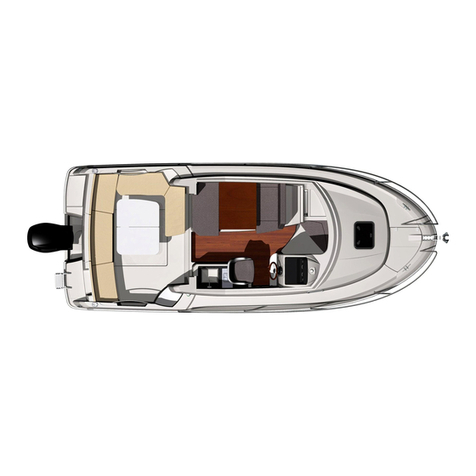
Jeanneau
Jeanneau MERRY FISHER 755 owner's manual



